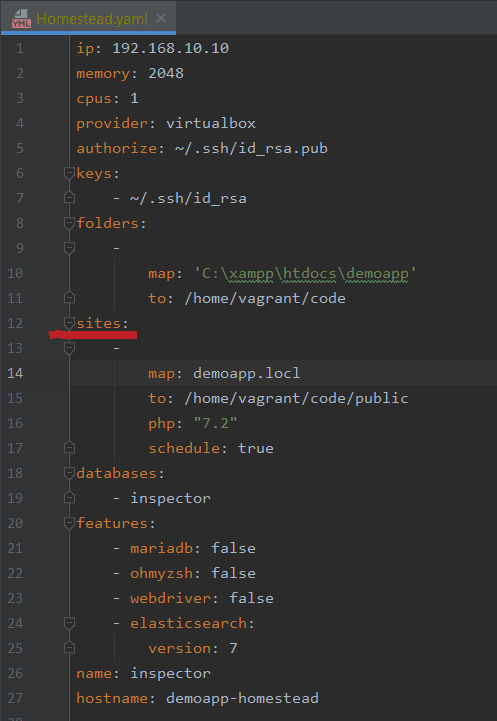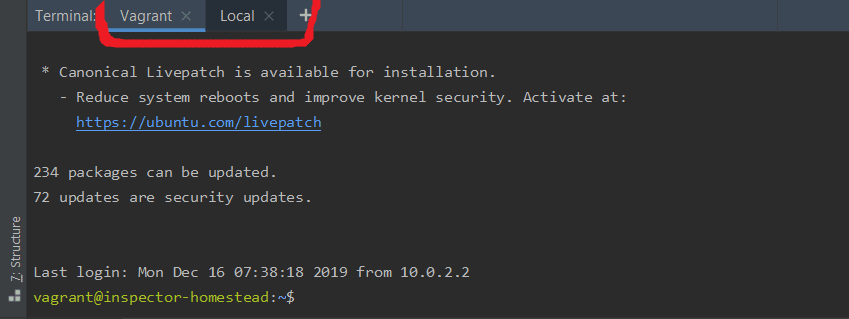Hi, I’m Valerio, software engineer from Italy and CTO at Inspector.dev.
To be honest, I wasn't an early adopter of local VMs as development environment (Docker, Vagrant, etc), mainly because I thought it took time to learn and I always have very limited free time.
Than I discovered Homestead, the official Laravel local development environment. It has solved my doubts and simplified my life.
This in no way is a replacement for referencing their documentation, and I encourage anyone who reads this to immediately read the docs after. So, with that being said, this article is for you if:
- You want to learn what Homestead and Vagrant are and do.
- You want to know why and how Homestead (or local VMs in general) will supercharge your development experience.
- You are expanding your business and using Xampp, MAMP, you are no longer able to recreate the production environment.
I will tell you the thinking process that led me to understand what kind of benefits I had using a VM to work on my applications locally.
VirtualBox + Vagrant
Vagrant is a tool to automate virtual machine “setup and configuration” process.
Basically to run a VM on your computer VirtualBox could be enough. But VirtualBox prepare and run just the hardware side of a VM. It's up to you to install everything you need starting from the OS…
The team behind Vagrant has built a simple tool that get a script in input (called Vagrantfile) to install and configure automatically all softwares and features you want your server to have, on top of the hardware provided by VirtualBox.
That’s why we need both installed on our PC.
You can download and Install VirtualBox from here: https://www.virtualbox.org/wiki/Downloads
You can download and install Vagrant from here: https://www.vagrantup.com/downloads.html
VirtualBox + Vagrant already provide you everything you need to run the VM for your application. But at this stage you should learn more about Vagrant to manipulate the Vagrantfile and customize your server configuraiton to fit your requirements.
What is Laravel Homestead
Laravel Homestead is a pre-packaged Vagrant Box and Vagrant setup. Thanks to Homestead I didn’t need to learn anything about Vagrant.
This is simple for small teams, fit for small to medium size projects, it boots fast, and it’s enough to get anyone started with Laravel in seconds.
1. Install on your project
I love this, mainly because you can install it "per project" using Composer like any other dependencies:
composer require laravel/homestead --dev
2. Generate the Vagrantfile and Homstead.yaml
Run the make command based on your OS.
Mac / Linux:
php vendor/bin/homestead make
Windows:
vendor\\bin\\homestead make
3. Map an URL for your project
The first field in the configuration file is the IP address of the VM.
It could be better to have an url that map this raw IP address to reach our application with the browser.
For the sites section, the "map" Key references the hostname that you are calling your project.
Using this hostname and the IP address we’ll need to update your computer’s host file.
- Mac: /etc/hosts
- Windows: C:\Windows\System32\drivers\etc\hosts
Add the entry below:
192.168.10.10 demoapp.locl
This is telling your computer that demoapp.locl is located at the server IP address 192.168.10.10 (which is your VM).
Tips! To run multiple VM for multiple project at the same time you need to have a unique IP for each of them. You can simply increase the last IP number in the
Homestead.yamlfile and configure properly your computer's hosts file:
192.168.10.10 demoapp.locl
192.168.10.11 another-app.locl
...
In the Homestead.yaml file you can see:
schedule: true
This option provided by homestead allow us to run the server with a cron job configured to run the Laravel Task Tcheduling. This is what I mean with "I didn't need to learn Vagrant".
4. Run the VM with your application inside
In your project's directory execute:
vagrant up
You will see the booting logs appear in your teminal, it takes just a few seconds.
5. Connect with SSH
You can SSH into your virtual machine by issuing the command below inside your project's directory:
vagrant ssh
Tips! As you can see in this image I usually keep two terminal windows opened in my IDE (this is a screenshot of my PHPStorm):
- "Vagrant" always in SSH with the project's VM.
- "Local" that simply point my local terminal to the project’s directory (as by default in PHPStorm).
This is important because now your database isn't reachable outside of your VM. So for example you need to use the "Local" terminal to create a migration script, but you need to go in the "Vagrant" terminal to run the migration.
Take a time to review the homestead documentation especially "Installing Optional Features" to check what other softwares you can install in your server to reproduce your production environment faithfully.
Conclusion
Homestead provides the perfect tool to start developing with Laravel. It lets you focus on the code and not the server, but at the same time, it encouraged me into getting more familiar with the server environment.
Thank you so much for reading it, I hope it helps people get started.
New to Inspector?
Create a monitoring environment specifically designed for software developers avoiding any server or infrastructure configuration that many developers hate to deal with.
Thanks to Inspector, you will never have the need to install things at the server level or make complex configuration inyour cloud infrastructure.
Inspector works with a lightweight software library that you can install in your application like any other dependencies. In case of Laravel you have our official Laravel package at your disposal. Developers are not always comfortable installing and configuring software at the server level, because these installations are out of the software development lifecycle, or are even managed by external teams.
Visit our website for more details: https://inspector.dev/laravel/










Top comments (0)